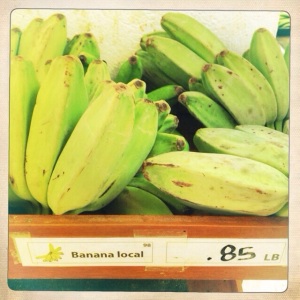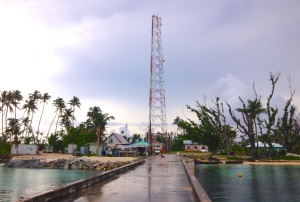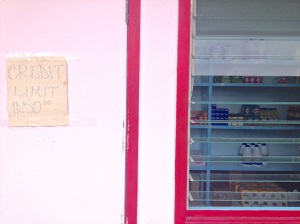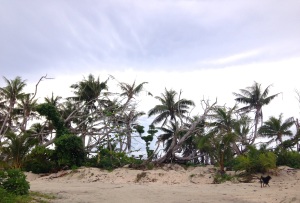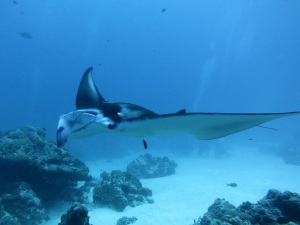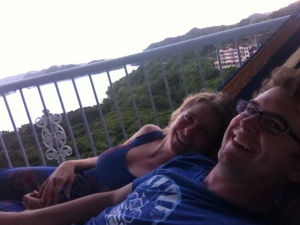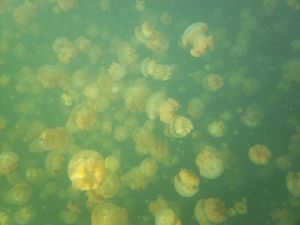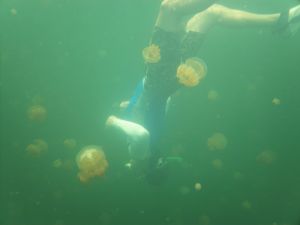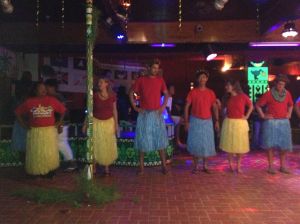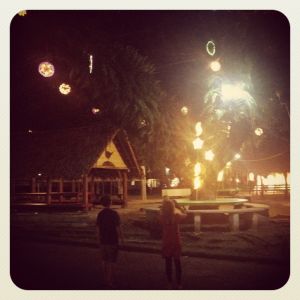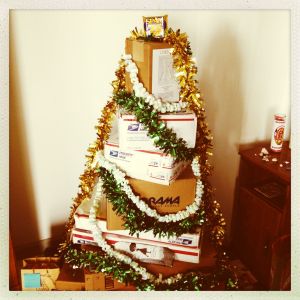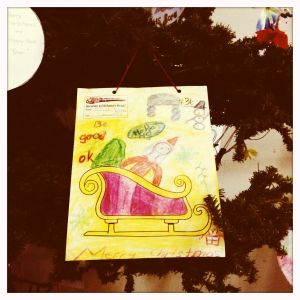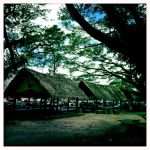Recently, I hitched a ride up to Kayangel, Palau’s northernmost state, an island atoll that was heavily damaged by last year’s record-breaking Super Typhoon Haiyan. I had been enchanted with Kayangel ever since I learned it was the source of Palau’s amazing and many-specied bananas, which are so superior to the mass-produced Cavendish we’re fed in the U.S. I don’t know how I’ll go back. (In his excellent book, Banana: The Fate of the Fruit that Changed The World, reporter Dan Koeppel aptly terms this bland, mass-produced variety the “the hotel banana.”)
Palau grows four varieties of banana with names like “bungeltuu” and “blangtalos.” Some are pinky-sized. Some are for cooking. All are delicious.
On an island where tropical fruits are mostly limited to a few hardy varieties of coconut, banana, lemon, and green papaya (heavily leached volcanic soil, it turns out, does not make for ideal growing conditions), the post-typhoon banana shortage, for everyone, was a real bummer. For Kayangel, it was devastating–a primary food supply destroyed, along with every home and building on the island.
It’s a three hour ride to Kayangel by state boat, but my friend Chris and I tagged along with a couple of U.S. Navy guys who were going by speedboat, a free hour-and-a-half ride in exchange for some manual labor. We spent most of the day dismantling a super-high-tech, $1.5 million surveillance tower designed to monitor illegal fishing. No big deal.
The tiny island—actually, four tiny islands with a combined land mass of 0.7 square miles, according to one of my maps—is definitely still in recovery mode. Before the storm, most of the people of Kayangel were evacuated to Koror, and many have chosen to remain on the “big” island, closer to creature comforts like a high school, grocery store, post office, and other amenities you won’t find on a secluded 0.7-square-mile atoll. As a result, the population of Kayangel has dwindled from about 130 to 53.
I imagine those stalwart locals who remain would find the bustle of Koror (city pop. 11,000–although it’s impossible to get straight numbers around here) overwhelming. Even before the typhoon leveled the place, life in Kayangel was quiet, days occupied by fishing, gardening, and island-style chilling. But it’s even more civilization-from-the-ground-up these days. We passed a few kids on bicycles on the single-track dirt roads, a few men napping in the mid-day heat in a communal open-air summer house, and the typical man-made signs of renewal: a makeshift church…
…a single village store that shelves sweets, Spam, and a few household necessities…
…and a basketball court currently occupied by prefab siding and other building equipment. Foundations for several new houses have been laid, and workers are making great progress on a new elementary school, which will double as the island’s new typhoon shelter.
Along the shoreline, the coconut trees look permanently windswept, hundreds of hardy trunks bent at sharp angles toward the sea. The tallest trees–those that survived–stand stark naked and stripped, like giant scarecrows, a reminder of the 300km/hr winds that ripped through the place.
But the jungle has a way of bouncing back. I could see, as the boat docked, a low canopy, lush, green and full. I asked a the first person I met about the bananas.
“Bananas!” he replied, nodding and grinning a huge grin. “Coconuts, not yet. But bananas, yes. Bananas we have.”


